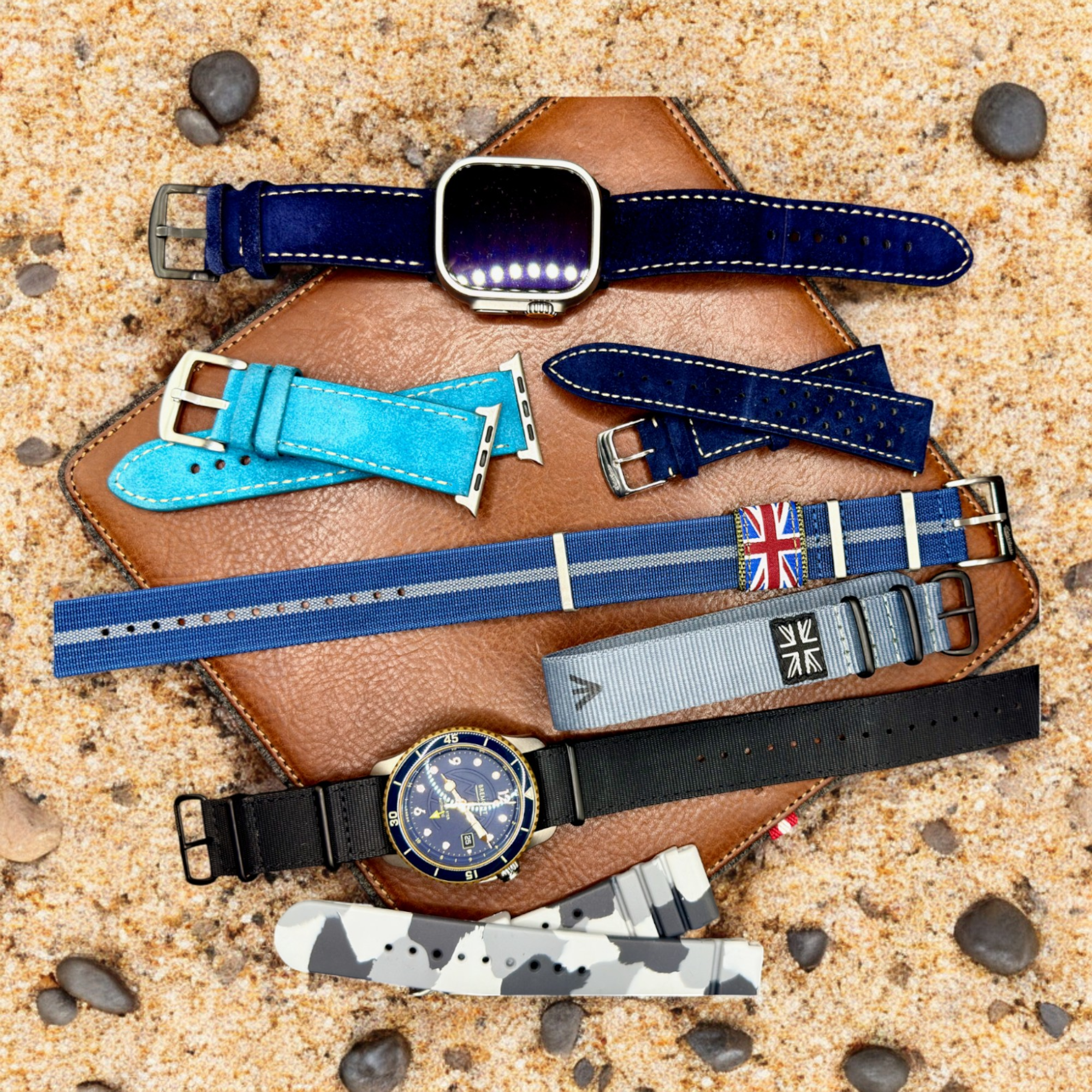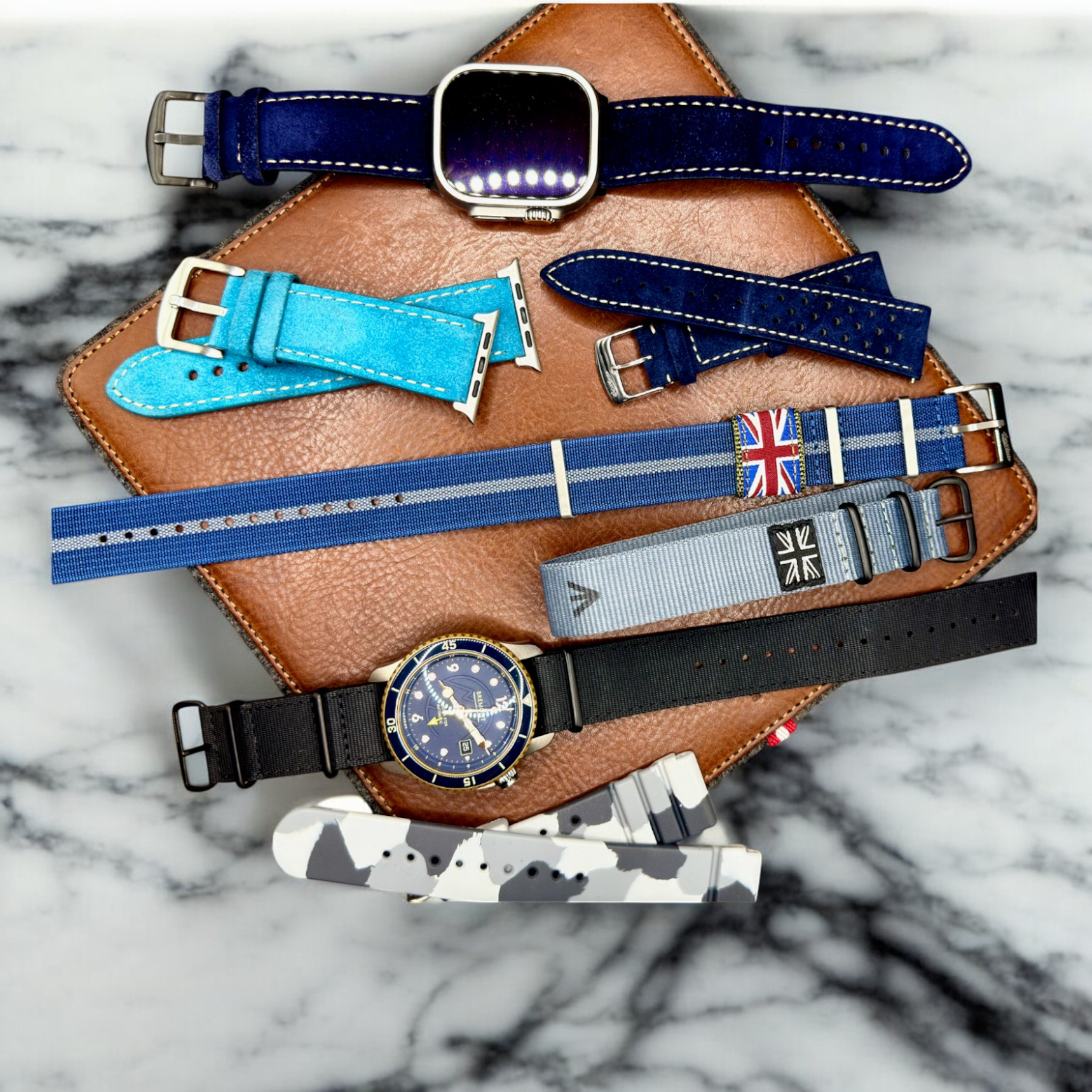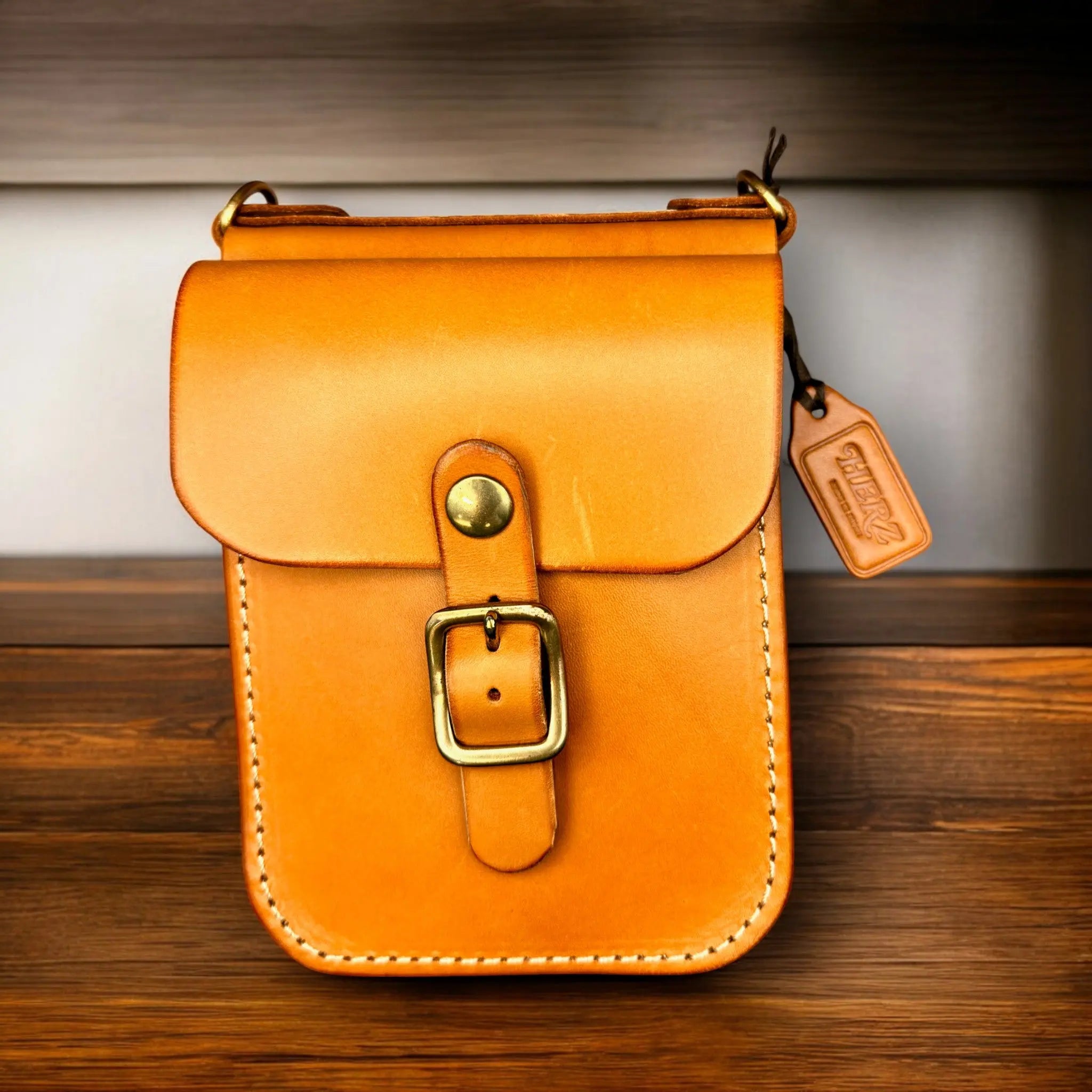A watch strap may seem like a simple accessory, but it plays a vital role in both the function and the personality of your timepiece. The right strap doesn’t just hold your watch securely—it transforms the way it looks, feels, and fits into your lifestyle.
From classic leather bands that exude sophistication, to rugged NATO straps built for adventure, and modern rubber straps made for diving, the variety is immense. For both seasoned collectors and casual wearers, understanding the fundamentals of watch straps will help you make smarter choices and get the most out of your watch.
This guide covers everything you need to know about watch straps: their history, types, materials, sizing, care, and how to choose the perfect strap for your needs.
A Brief History of Watch Straps
Before diving into details, it’s helpful to know how watch straps evolved.
-
Early 20th Century: Wristwatches became popular during World War I, when soldiers found pocket watches impractical. Straps were made from simple leather or fabric, valued for comfort and security.
-
1960s–70s: Rubber straps were introduced for dive watches, thanks to their waterproof properties. Tropic straps became iconic among divers.
-
1973: NATO straps were developed by the British Ministry of Defence. Their rugged nylon design ensured that even if one spring bar failed, the watch stayed on the wrist.
-
Modern Era: Today, straps are not just functional—they’re fashion statements. With interchangeable designs and quick-release systems, swapping straps to match outfits or activities has never been easier.
Anatomy of a Watch Strap
A typical watch strap consists of several key components:
-
Main Strap Material: Leather, rubber, nylon, canvas, or metal.
-
Buckle/Clasp: Options include pin buckle, deployant clasp, butterfly clasp, or hook-and-loop.
-
Keepers/Loops: Hold the extra length of the strap.
-
Spring Bars: Small rods connecting the strap to the watch case.
Each detail affects comfort, durability, and appearance. For example, a deployant clasp can extend the life of leather straps by reducing wear on the holes.
Types of Watch Straps
1. Leather Straps
Timeless and versatile, leather is perfect for formal and everyday wear. It comes in many finishes: smooth, pebbled, suede, or exotic skins.
-
Pros: Elegant, comfortable, ages beautifully with patina.
-
Cons: Sensitive to water and sweat.
-
Best For: Business, formal events, casual chic.
🔗 Shop Leather Straps
2. Rubber Straps
The go-to choice for sports, diving, and hot climates. High-quality HNBR rubber is especially durable.
-
Pros: Waterproof, flexible, UV-resistant, low-maintenance.
-
Cons: Less formal, can feel bulky on slim watches.
-
Best For: Swimming, diving, outdoor adventures.
🔗 Shop Rubber Straps
3. NATO & Zulu Straps
Military-inspired nylon straps, popular for their toughness and ease of swapping.
-
Pros: Affordable, secure (one-piece design), variety of colors.
-
Cons: Can absorb sweat, less refined for formal wear.
-
Best For: Casual, sports, field watches.
🔗 Shop ZULU Straps
4. Canvas Straps
Rugged and breathable, canvas straps offer vintage charm.
-
Pros: Durable, casual, unique texture.
-
Cons: Absorbs moisture, requires care.
-
Best For: Weekend wear, vintage-inspired styles.
🔗 Shop Canvas Straps
5. Metal Bracelets
Though not technically straps, metal bracelets are a staple. They add weight, shine, and a professional finish.
-
Pros: Long-lasting, formal, luxurious feel.
-
Cons: Heavy, scratches show easily.
-
Best For: Office wear, luxury watches, daily use.
📏 Strap Sizing and Fit
Getting the right size is essential for both comfort and aesthetics.
-
Width: Measured in millimeters at the lugs (common sizes: 18mm, 20mm, 22mm).
-
Length: Standard fits most, but shorter or longer lengths are available.
-
Thickness: Thicker straps look rugged and sporty, thinner straps suit formal watches.
💡 Tip: A strap that’s too wide won’t fit, while one too narrow looks awkward and may wear out faster.
Choosing the Right Strap for Your Lifestyle
-
Formal Events: Leather straps in black, brown, or navy.
-
Workwear: Subtle leather or steel bracelets for professionalism.
-
Outdoor Activities: Rubber or NATO straps for durability.
-
Casual Weekends: Canvas or colorful nylon straps for personality.
-
Travel: Quick-release straps for easy swaps between occasions.
👉 Owning multiple straps gives you flexibility without needing multiple watches.
Caring for Your Watch Straps
-
Leather: Avoid water; clean with soft cloth, condition occasionally.
-
Rubber: Rinse with fresh water after swimming; avoid prolonged UV.
-
Nylon/Canvas: Wash with mild soap, air dry completely.
-
Metal: Wipe with microfiber cloth; deep clean links with a brush.
Rotating your straps helps prolong their lifespan.
Final Thoughts
A watch strap is far more than a simple band. It’s a reflection of your lifestyle, your taste, and your attention to detail. With the right strap, you can instantly transform your timepiece and elevate your overall look.
Upgrade your watch game today with premium straps from TAGSTHX.com — where style meets craftsmanship.


